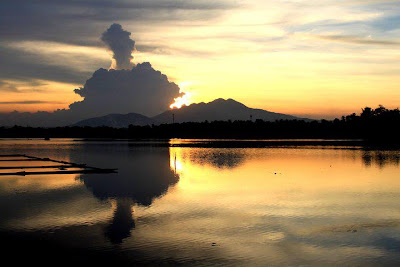San Pablo the 1st Hermit Cathedral and Ateneo De San Pablo: 1951
History of Ateneo de San Pablo
The Seminario Menor de San Francisco de Sales constructed adjacent to the Cathedral a two-storey building in 1912. But after some yea it was closed and transferred to Lipa.
It is before the beginning of the World War 2 that the Seminary building and its premises were donated to the Society of Jesus (the Jesuits) for conversion into a tertiary educational institution.
In 1947, the Jesuit Fathers converted the former Seminary, which was partially damaged by the Japanese forces, into a secondary school. It was named Ateneo de San Pablo
However,, 1978 tthe last graduation day in the Ateneo de San Pablo was held in March 31 in that year and soon The Ateneo de San Pablo became the Liceo de San Pablo, a parochial school of the Diocese.





